#we killed the mainstream family show and now we live in a wasteland
Explore tagged Tumblr posts
Text
we need to get colin morgan and bradley james back on the television in a big way. no pair of actors have served odd couple realness on such a scale since them we need it back the world is so bleak!!
#they don’t let great actors like colin morgan be in comedic family shows anymore.#they all have to be in crap streaming service shows rated M#we killed the mainstream family show and now we live in a wasteland#the closest thing we have now to this is like. ghosts cbs#we need to get. millie bobby brown in a show that’s like. a prequel of like. an alice in wonderland character#that airs weekly on like cbs#this is so serious to me
4 notes
·
View notes
Text
Another opinionated jerk makes a top ten movies of 2016 list!

Hey everybody and welcome back to my often neglected blog. It’s been even more neglected this year due to me finally figuring out how to use Instagram. This has been a really, really, really good year for movies. Don’t let the haters bring you down, there was a lot of good stuff this year. For the first time in a long time my list isn’t heavily populated with independent genre work (although I always argue all film is genre).
My one cravat as always is that I include festival films that might not have opened wide. This year it’s only one film I think.
Anyways without further adieu:
TOP TEN FILMS OF 2016
1. CHRISTINE
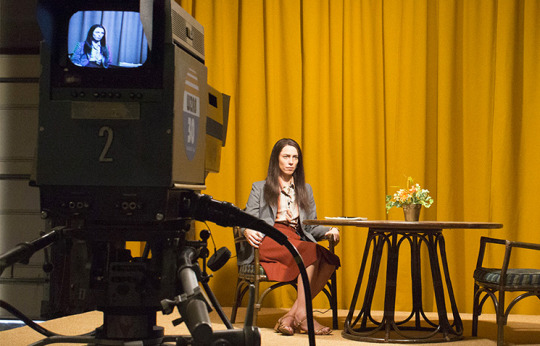
written by Craig Shilowich; directed by Antonio Campos; staring Rebecca Hall, Michael C. Hall, Tracy Letts
This film stuck with me long after watching it. Even now I can’t really get it out of my head. Not to be confused with Kate Plays Christine which also examines the story of television journalist Christine Chubbuck who famously, or rather infamously, committed suicide live on air in 1974. This film is not an entirely joyless watch, and it’s care and craft with the tragic story is stunning.
Rebecca Hall (who I’d somehow never seen in anything before) gives a performance that is so nuanced that you completely understand the depression that hangs over her, and makes her suicide less of shocking event and more of a soft sad gradual ending.
2. NEON DEMON
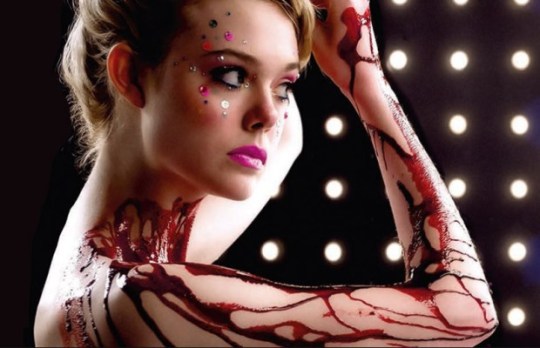
written by Mary Laws, Polly Stenham, Nicholas Winding Refn; directed by Nicholas Winding Refn; staring Elle Fanning, Jena Malone, Abbey Lee, Bella Heathcote
Haters are gonna hate. That’s the best way to describe the critical reaction to this movie. I don’t want all my thoughts to be about the reaction the film had at Cannes and afterwards but it definitely defined the conversation around this film.
Hopefully with time an audience will find the film and appreciate it for what it is: pure style and attitude. It’s a punk rock middle finger to the male gaze.
3. COLOSSAL
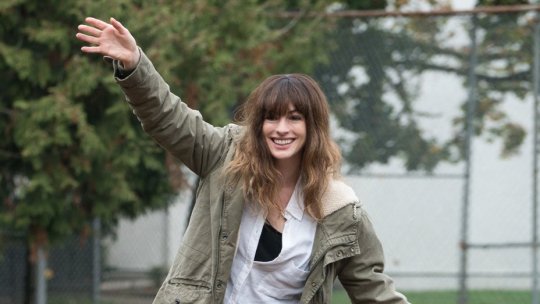
written & directed by Nacho Vigalondo; staring Anne Hathaway, Jason Sudeikius, Tim Blake Nelson, Dan Stevens, Austin Stowell
The single most original film I’ve seen this year. It’s a film about addiction and the effect it has on giant monsters destroying South Korea. I’m not saying anything else because that would ruin the sheer joy of watching this film.
4. HELL OR HIGH WATER

written by Taylor Sheridan; directed by David MacKenzie; staring Chris Pine, Ben Foster, Jeff Bridges, Gil Birmingham
Truly the first great modern-time western since Vanishing Point in the 70s. I’d argue it’s even a better western than No Country For Old Men. One of probably the best portraits of the current American financial landscape, it tells the tale of two brothers (Pine & Foster) who take to robbing banks in order to pay of the mortgage on their late mother’s farmland, while being pursued by two Texas Ranges (Bridges & Birmingham).
The scene that sums up terrible situation that the brothers find themselves in is when they attempt to take a bank only to find that it has been shut down due to lack of business.
It could be read as a metaphor for the current financial wasteland that millennials (Pine & Foster) have been born into and the omnipresent crush of the baby boomers and generation x (Bridges & Birmingham) that is damaging the economy beyond repair. And it has shootouts and car chases!
5. LOVE AND FRIENDSHIP
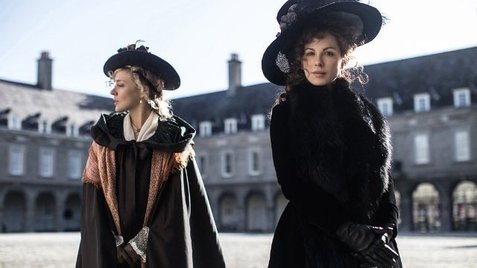
adapted & directed by Whit Stillman; staring Kate Beckinsale, Chloe Sevigny, Morfydd Clark, Xavier Samuel, Stephen Fry
Whit Stillman always took great inspiration from Jane Austen’s work. Much of his loose comedy of manners trilogy (Metropolitan, Barcelona, Last Days of Disco) would fit right alongside Pride and Prejudice or Emma and would be far more accessible to modern audiences.
This is probably the best (in my opinion only) adaptation of Austen’s work. It’s (as far as I know) the only adaptation of her short novel “Lady Susan.” Beckinsale plays the titular Lady Susan who flirts, gossips, backstabs, and snarks her way through Britain attempting to secure financial security for herself (and possibly her daughter if by accident).
Don’t let the period pedigree fool you: this is a hilarious comedy first and foremost. It succeeds where nearly all other Austen adaptations fail because Stillman embraces the terrible way the characters treat each other and minimizes the too-precious romance that sinks most other adaptations of her work.
6. BLAIR WITCH
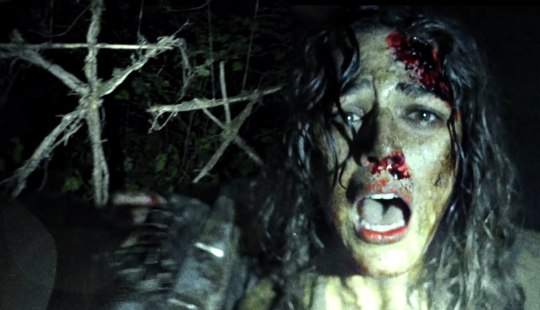
written by Simon Barrett; directed by Adam Wingard; staring James Allen McCune, Callie Hernandez, Brandon Scott, Corbin Reid, Wes Robinson, Valorie Curry
At some point it became trendy to crap on any film that was a long late sequel. Especially a sequel to a cultural juggernaut like The Blair Witch Project. A lot of people wrote this film off as a warmed over retread of the original. To be honest I’m sure most of those people didn’t actually see the movie. Or if they did they went in with mind made up and refused to admit that this movie is pretty damned good. And very damned scary.
I caught it at Midnight Madness at the 2016 Toronto International Film Festival. Only the hardest of the hardcore go to those screenings and the place was terrified.
The team behind the ludicrously awesome films “You’re Next” and “The Guest” (Barrett & Wingard) made a balls-to-the-wall horror show with their Blair Witch. The audience will feel totally beaten up by the end of this movie and leave questing their safety in society.
7. THE NICE GUYS

written by Anthony Bagarozzi & Shane Black; directed by Shane Black; staring Ryan Gosling, Russel Crowe, Angourie Rice
It’s Shane Black doing a gumshoe hardboiled detective story set in grimy 1970s Los Angeles set during Christmas. If I need to say more: you guys are jerks.
8. THE WITCH
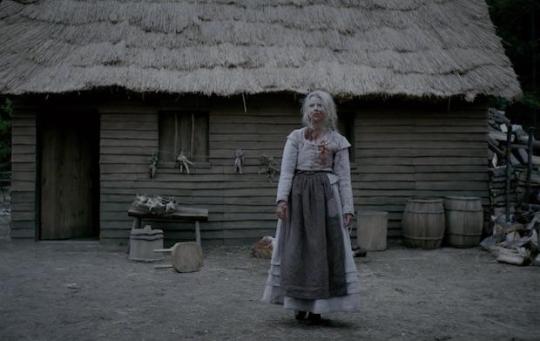
written & directed by Robert Eggers; staring Anya Taylor-Joy, Ralph Ineson, Kate Dickie, Harvey Scrimshaw, Ellie Grainger, Lucas Dawson
The genius of this movie is that there are no real twists in it; yet it’s wholly (holy?) satisfying. A family of devout Christians are exiled and isolated, and are driven to distrustful paranoia when a coven of witches and the most evilest goat ever to grace the screen target them. A satanic bunny kills a dog and a woman mistakes a crow for her infant son. It’s got everything!
Haunting, horrifying, and beautiful this film is so captivating that it was equally praised by theologians and satanists. It’s mystifying and mysterious in how good of a film it is.
9. LA LA LAND

written & directed by Damien Chazelle; staring Ryga Gosling, Emma Stone, John Legend
Haters are gonna hate, but this movie is simply great.
A musical that finally breaks free of the Andrew Lloyd Webber/Tim Rice/jukebox musical crappola that we’ve had to deal with since the 70s. You don’t walk away remembering any songs, because the film never comes to a stop to say “here’s a song!”
The music actually is integral to the emotion and character of the story. And it’s quite good too. And maybe now I kinda like jazz?
10. HUSH

written by Kate Siegel & Mike Flanagan; directed by Mike Flanagan; staring Kate Siegel, John Gallagher Jr., Samantha Sloyan, Michael Trucco
Make no bones about it: this is a mean movie. It’s got one of the most clever concepts I’ve ever seen: how would a deaf mute woman defend herself against a home invader?
It’s gripping and tense and you just want the lead character of Maddie (Kate Siegel) to survive and defeat her assailant (John Gallagher Jr.). The movie is essentially just the two of them trying to outsmart one another while both deal with Maddie’s handicap.
It’s just scary enough while never crossing over into the hardcore horror territory the would alienate mainstream audiences.
-------------------- ------------------------ -------------------------
So, that’s it. Sorry it’s a little late. I still haven't seen everything I wanted to see that came out last year. And I should have included Everybody Wants Some!! somewhere but whatever.
Stay scared.
-G
January 2017
1 note
·
View note
Text
Calling Out to My Past: Rap Music and Suburbia in the 1990s: Part 1
It begun with a record. Bigger and Deffer by LL Cool J. My older brother got hold of it, played it regularly and I could not help but listen. For a young boy with attention problems, this had the amazing effect of bringing me some kind of centre point for a while. After lots of pestering, he recorded onto cassette for me and it rarely left my Walkman. It is obvious to say, but in the mid-1980s outer-London suburbia, this was a new sound; a genuinely unheard type of music.
These articles will not be any comprehensive history of hip hop culture; this is just about how it affected my life; how it helped me form my character and switch me on to a world outside; of injustice and the need to fight back; of a world where imagination to create was not restricted or sneered at. This is not nostalgia because that disease needs killing off; this is just about life.
I grew up in the suburbs of Hillingdon. Not a place full of diversity, nor originality. While the social upheaval of Rave was going on somewhere in the country, ‘going out’ in my world meant going down the park, or sometimes to Harrow or Uxbridge shopping centres. Live music did not exist and record shops were not on the agenda; we bought our 7” singles in Woolworths.
Houses were either the post-war verity or the new builds that look like show houses for your own remake of Village of the Damned. Some were pastel; many had a Vauxhall of some verity on the driveway. The music these people listened to was universally appalling. I somehow knew from early on it had nothing to do with me.
They like things the same and are not into relating to difference. These are the sort of people Heart FM and Magic were invented for.
The cover of Bigger and Deafer had a many in slick clothes and a chain around his neck, standing on a car bonnet. Somehow I knew it was New York City. The sound, as the cliché goes, was like nothing I had ever heard before but really, that’s the truth. Beats were not coming from a drum kit; there were no guitars or synths and central to it all was one confident man with amazing word skills.
Even kids in my primary school had no idea who LL Cool J was. As my brother got bored with the record, I got that too. I would not have thought of myself as the type who liked poetry but something went in my head when I heard things like the opening lines of My Rhyme Ain’t Done:
‘The president woke and he called the pope
The pope planted heaven on a golden rope
PS the Lord raised Michelangelo from the dead
So he could make a fresh painting of my head’
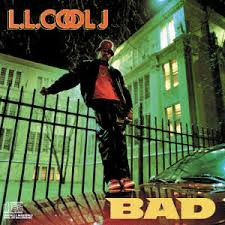
Now bragging is something that became tiresome in rap music and everywhere else pretty quickly but lines like that were at least a little inventive; calling upon the almighty to raise a great artist purely to paint your portrait. The wordplay was something that always impressed me. Rap music was from another world and that was before it fully opened my mind to the social reality of American life. This was giving us news, while we were still recovering from the BBC re-cutting footage of the miner’s struggles at Orgrieve.
The next few years passed without incident musically (or much else). Music came from the radio and rarely stayed in the head for long, although as mentioned there was something brewing in the fields that you occasionally caught wind of, perhaps while watching late-night Channel 4, but that was as close as I ever got. My life was a tired, cultural wasteland.
Then, I became a teenager.
One day, it must have been in 1992 or early 93, I was walking to the train station when I saw some kid with a Public Enemy t-shirt. It looked like my thing; the three main members sitting around a skull, Flavour Flav smiling with his mouth full of gold teeth; some uniformed heavies standing behind them.
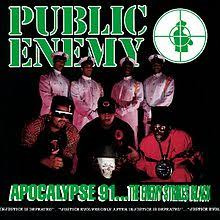
Later, probably in an Our Price, I took a punt on the album Apocalypse 91: The Enemy Strikes Black, whose cover was the t-shirt design. I remember first hearing it on a Saturday night; it made an impact. Public Enemy’s best is generally accepted to be It Takes a Nation of Millions to Hold Us Back and Fear of a Black Planet and I agree; but A91 will always have a special place for me – my introduction to the harsh beats of The Bomb Squad’s production that can still loosen your teeth and the rhyming dominance of Chuck D on songs about the lasting legacy of slavery, police harassment and brutality – all so sadly relevant today. The unrelenting nature of this music, not letting you up for air yet still having positive messages, was very influential.
This music was almost always a Walkman thing. As I got further into the genre the amount of naughty words were going to be a problem if my parents over-heard (although it is debateable they were ever switched off enough to not really know), so bar the odd-Saturday afternoon when everybody was out, music listening was a clandestine affair. I could be in the same room as the family, moronically staring at the TV for another episode of Only Fools and Horses or Noel Edmonds on whatever weekend pap was allowing us to forget the oncoming Monday morning; but I had a different soundtrack pumping through my earphones. They got served the mainstream; I sat at the back of the living room with a revolution beginning in the head.
Public Enemy became a staple but then there was Ice-T. A former criminal turned rapper who documented life on the tough streets with an authentic voice, inventing Gangster Rap in the process. He bragged a little, but specifically made the point that he (and you) were as good as anyone; Going from a broken family, passing through gang life then moving to Beverley Hills to a big house full of guns, in case anyone took a real dislike to his presence.
Another boy in my school, a posh white boy from the pricey end of Northwood, leant me Power and OG (Original Gangster). These albums contained a fully-realised artistic vision; the tales of modern street life, criminality and consequence; standing up to authority and learning to stand up against injustice. The message was ‘I may have been poor and black in America, but now I am rich and black and not backing down’.
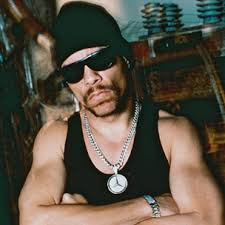

However this is not a rosy look back; consumption of the music of Ice-T was not without it’s problems. His attitude towards women was pretty shit; nothing but fuck machines really, but that has always blighted the genre.
Similarly Ice Cube had indulged in this sort of thing, but he also gave us the undiluted rage of what it was like to be on the receiving end of police harassment and brutality.
When we saw the LA riots on TV, it was of course shocking but there was zero attempt
by the news to enquire why this was happening – why were some people calling it an uprising? To begin to answer questions like that, we had to turn to The Predator.
In an interview with Hip Hop Connection magazine, Ice Cube had praised the response in LA to the acquittal of four police officers who had been caught on video severely beating a man named Rodney King. He expressed regret that some people had been hurt, but pointed out that ‘America doesn’t hear pickets and protest singing, she just hears mass destruction’.
The Predator was an historical document according to one writer at the music magazine MOJO.

Through listening to that album I learnt who Darryl Gates was (‘that’s where all the hate went’); through Cypress Hill’s Black Sunday I learnt about how to mix musical style from punk intensity (as Public Enemy had done) with a more laid back style that did not compromise on the content on the song.
Through the 2 Live Crew (yes they were shit but still), Ice-T and Body Count, I learnt about censorship and how it worked and who it targeted. Why was there a live version of a Phil Collins song on Capital FM where he talked about a woman who ‘may fuck up your life’ and my parents didn’t have a problem with him?
I was not a mainstream suburban boy; I never had been and it was clear never would be; now I had my own taste, a growing interest in politics and the stories of the dispossessed; plus my wardrobe was changing to include t-shirts of my favourite artists and jackets with a logo of some US football team called the LA Raiders.
Everything had changed.
End of Part 1
0 notes
Text
Here’s How Teens Who Abuse Opioids Are Getting Them
Most teenagers wallowing inside a wasteland of opioid abuse are not getting pain medications from black market sources. These little pill poppers are obtaining them legally, with a prescription, from their friendly neighborhood physician, according to a new study in the journal Pediatrics.
Researchers at the University of Michigan studied almost four decades of data pertaining to prescription painkillers. What they found was most of the teens using these types of drugs for recreational purposes had been prescribed opioids at one time or another.
These findings provide some additional backbone to another recent exploration into the opioid crisis, which found that people were more likely to become dependent on pain pills if prescribed more than a three-day supply.
It is unfortunate that the mainstream media often discounts the opioid problem in the United States as one that only affects the adult population. However, hospitalizations for opioid-related incidents in young children and teens have been rapidly increasing over the past two decades. A lot of these kids are simply dipping into a family member’s medicine cabinet, while others do not have to look any further than their family doctor to get a taste of what it’s like under the influence of hardcore pharmaceuticals.
“One consistent finding we observed over the past two decades is that the majority of non-medical users of prescription opioids also have a history of medical use of prescription opioids,” study author Sean McCabe, a research professor at the University of Michigan, told Live Science.
This means doctors all across the nation are planting the seed for the future of junkie America.
Right now, the U.S. consumes 80 percent of the global supply of prescription pain pills, with prescriptions for drugs like OxyContin and Vicodin increasing by more than 130 million between 1991 and 2013. If this trend continues, it is conceivable that these drugs could jeopardize the majority of young minds before they are even legally old enough to go to war or drink a beer.
“Health professionals who prescribe opioid medications to adolescents can play an important role in reducing prescription opioid misuse,” McCabe told Live Science. “We consider any rate of non-medical use of prescription opioids alarming, based on the known adverse consequences associated with this behavior.”
The present situation with teens and opioids is much more severe than the propaganda laden argument that lawmakers often lean on concerning marijuana as a gateway drug. In fact, studies show that youngsters have a greater disposition toward experimenting with hard drugs, like heroin, after gaining some experience with prescription painkillers. By then, it’s often too late for a turnaround.
Even former U.S. Attorney General Loretta Lynch, who served under President Obama, believes this to be true.
In 2016, she told a group of Kentucky high school students that, “when we talk about heroin addiction, we unusually, as we have mentioned, are talking about individuals that started out with a prescription drug problem, and then because they need more and more, they turn to heroin.”
“It isn’t so much that marijuana is the step right before using prescription drugs or opioids,” she added.
The current administration, however, does not have as much clarity on the issue.
During a recent speech in front of Virginia law enforcement, U.S. Attorney General Jeff Sessions rejected the idea of medical marijuana being, at least, a potential solution to the opioid epidemic, despite a number of studies showing it to be a possibility.
“I am astonished to hear people suggest that we can solve our heroin crisis by legalizing marijuana—so people can trade one life-wrecking dependency for another that’s only slightly less awful,” he said. “Our nation needs to say clearly once again that using drugs will destroy your life.”
The problem is the federal government continues to hinder marijuana research in such a way that makes it next to impossible to produce more concrete data with respect to cannabis as an alternative to opioids.
President Trump has the power to change this right now by initiating the process to have marijuana downgraded under the Controlled Substances Act—giving it more scientific flexibility. As it stands, the federal government still considers cannabis one of the most dangerous drugs in the world, even though the DEA admits, “no death from overdose of marijuana has been reported.”
In 2015, prescription opioids, classified less dangerous than marijuana, killed 33,000 American citizens—a death rate that surpassed motor vehicle accidents and gun-related homicides.
You can keep up with all of HIGH TIMES’ news right here.
from High Times http://ift.tt/2mMDNFb via IFTTT
from WordPress http://ift.tt/2nd9BEU via IFTTT
0 notes